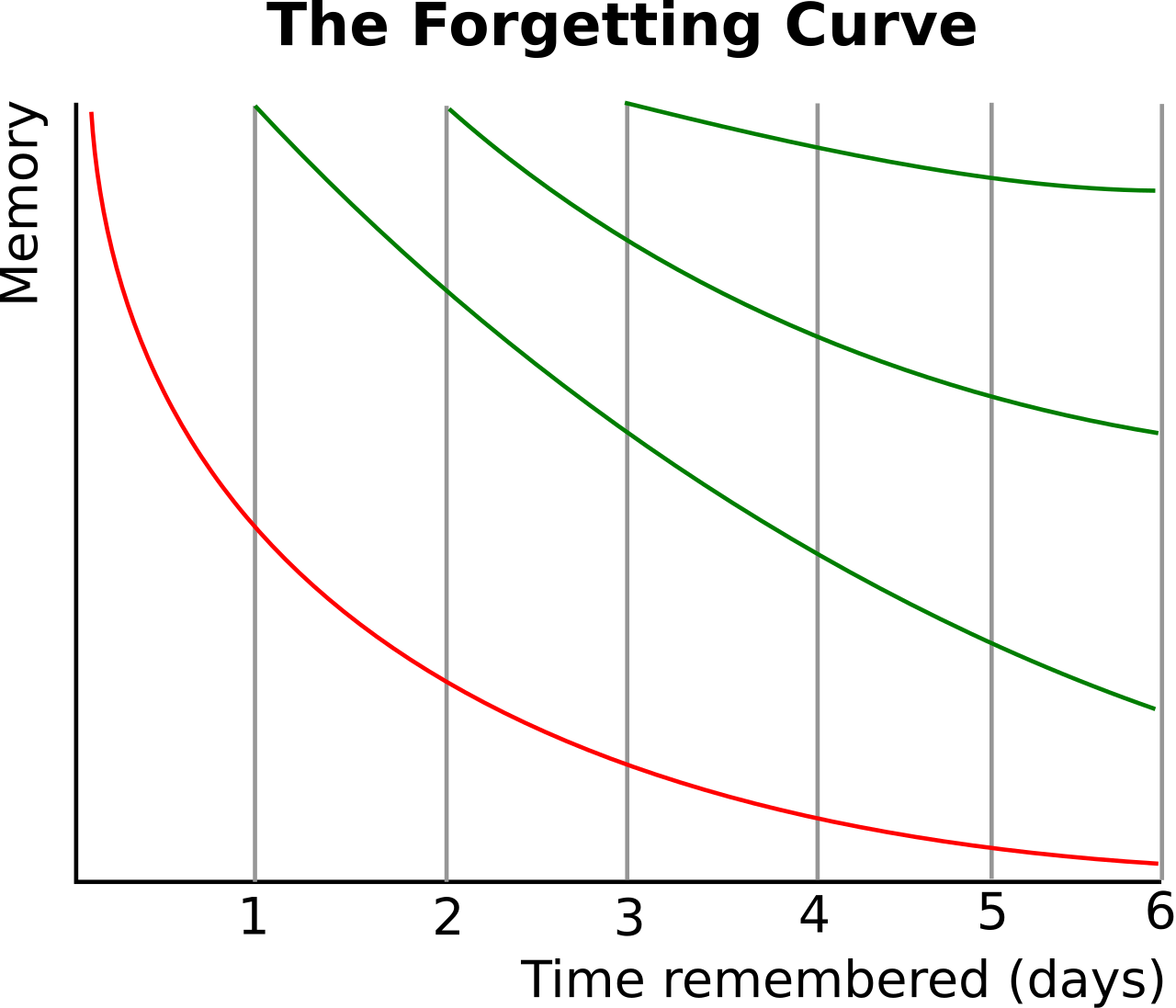
Mastering the Repetition Curve: A Key to Effective Learning
Introduction
In the world of learning and memory, the repetition curve is a concept that plays a crucial role in helping us retain new information over time. Known also as spaced repetition, this theory suggests that by revisiting information at specific intervals, learners can reinforce their understanding and memory. But is this a widely accepted approach, and why is it essential to remember the repetition curve during your learning process? In this article, we’ll break down the science behind the repetition curve, explore its acceptance in educational research, and highlight how it can transform the way you learn.
What Is the Repetition Curve?

The repetition curve is based on the principle that our memory retention diminishes over time—a concept known as the forgetting curve. By revisiting material periodically, we interrupt this forgetting process, gradually moving the information into our long-term memory.
Here’s how the repetition curve works:
- Initial Learning: When you first encounter new information, your brain encodes it into short-term memory.
- Decay Begins: Without reinforcement, memory retention of that information starts to decrease. This decline happens faster for complex or novel material.
- Spaced Review: By reviewing information at increasing intervals (for example, after one day, three days, one week, and one month), you effectively disrupt the forgetting curve, strengthening memory retention each time.
- Long-term Retention: Over time, this spaced repetition leads to more durable, long-term retention, allowing you to recall information with greater ease.
This structured repetition contrasts with simple rote memorization and has become the foundation for many learning techniques and tools, such as flashcards and spaced repetition software (SRS) like Anki or Quizlet.
Why the Repetition Curve Matters in Learning
Understanding and applying the repetition curve offers numerous benefits in learning, particularly in areas that require strong memory retention, such as language learning, medicine, and STEM fields. Here are a few key reasons why remembering this concept is important for learners:
- Improves Retention: By applying the repetition curve, learners can retain information for longer periods, reducing the need for constant review and preventing knowledge “decay.”
- Saves Time: Instead of reviewing all material constantly, you can optimize study time by only revisiting material as the curve suggests, making learning more efficient.
- Boosts Confidence: Reinforcing memory through spaced repetition increases confidence as learners notice their improved ability to recall information accurately.
- Builds Foundational Knowledge: Long-term retention of foundational knowledge enables more advanced learning, as learners can draw on previously learned material without hesitation.
Incorporating the repetition curve into your study habits can not only help you retain information but also improve overall learning efficiency and confidence.
Is the Repetition Curve Accepted or Contested?
The repetition curve is widely accepted within cognitive psychology and education as an effective memory enhancement strategy. However, as with many theories, there are some points of contention and areas for further research:
- Strong Support: Research in memory and cognitive science supports spaced repetition as an effective learning strategy. Numerous studies demonstrate that spaced reviews improve retention, and many education systems integrate this approach into learning programs.
- Points of Debate: Some researchers debate the optimal spacing intervals, suggesting that the intervals may vary depending on the complexity of the information, the individual’s learning style, and their prior knowledge of the subject.
- Ongoing Research: Advances in neuroscience continue to study the intricacies of the repetition curve, including the best intervals for memory reinforcement and how individual differences might impact its effectiveness. Some areas of learning, such as creative skills, may benefit from alternative repetition patterns.
Despite these debates, the repetition curve remains a respected and frequently applied method for improving long-term retention.
How to Apply the Repetition Curve in Your Learning Process
Applying the repetition curve to your studies can be simple with the right techniques. Here are some strategies:
- Use Spaced Repetition Software: Apps like Anki, Quizlet, and SuperMemo use algorithms to set the optimal review intervals, making it easy to integrate spaced repetition into your study routine.
- Set a Review Schedule: If you prefer to avoid apps, set a schedule based on the repetition curve. For example, review new material after 1 day, then after 3 days, then 7 days, and so forth.
- Combine with Active Recall: Actively recalling information (like testing yourself) during each review session strengthens memory retention even more effectively than passive review.
- Prioritize Core Concepts: Focus on reviewing core material to ensure it becomes part of your long-term knowledge base, which will make more advanced learning smoother.
- Adjust Frequency as Needed: Everyone’s memory retention is unique, so experiment with intervals until you find what works best for you. Consistency is key.
Conclusion
The repetition curve offers a powerful framework for enhancing memory retention and learning efficiency. By following the principles of spaced repetition, you can strengthen your memory, save valuable study time, and build a foundation of knowledge that’s resilient to the passage of time. While some debates around optimal intervals and individual differences remain, the repetition curve is widely accepted and has helped countless learners retain information more effectively. Embracing this approach can revolutionize your learning, no matter the subject.
Bonus: Did You Know?
German psychologist Hermann Ebbinghaus, who discovered the forgetting curve in the 19th century, was the first to document the benefits of spaced repetition. His groundbreaking research paved the way for modern learning techniques that leverage the repetition curve, helping us remember information better and for longer!
Sources
